Cards on the table time. It had felt like Shimano had maybe taken its eyes off the ball when it came to gravel. Sure, the Ultegra RX derailleur did a good job of keeping chain chatter down, but if you wanted a 1x option you had little option but to go with SRAM or a mix-and-match approach. We’ve heard rumours of something new from Shimano for a while, but were expecting a little more of the evolution rather than revolution type story.
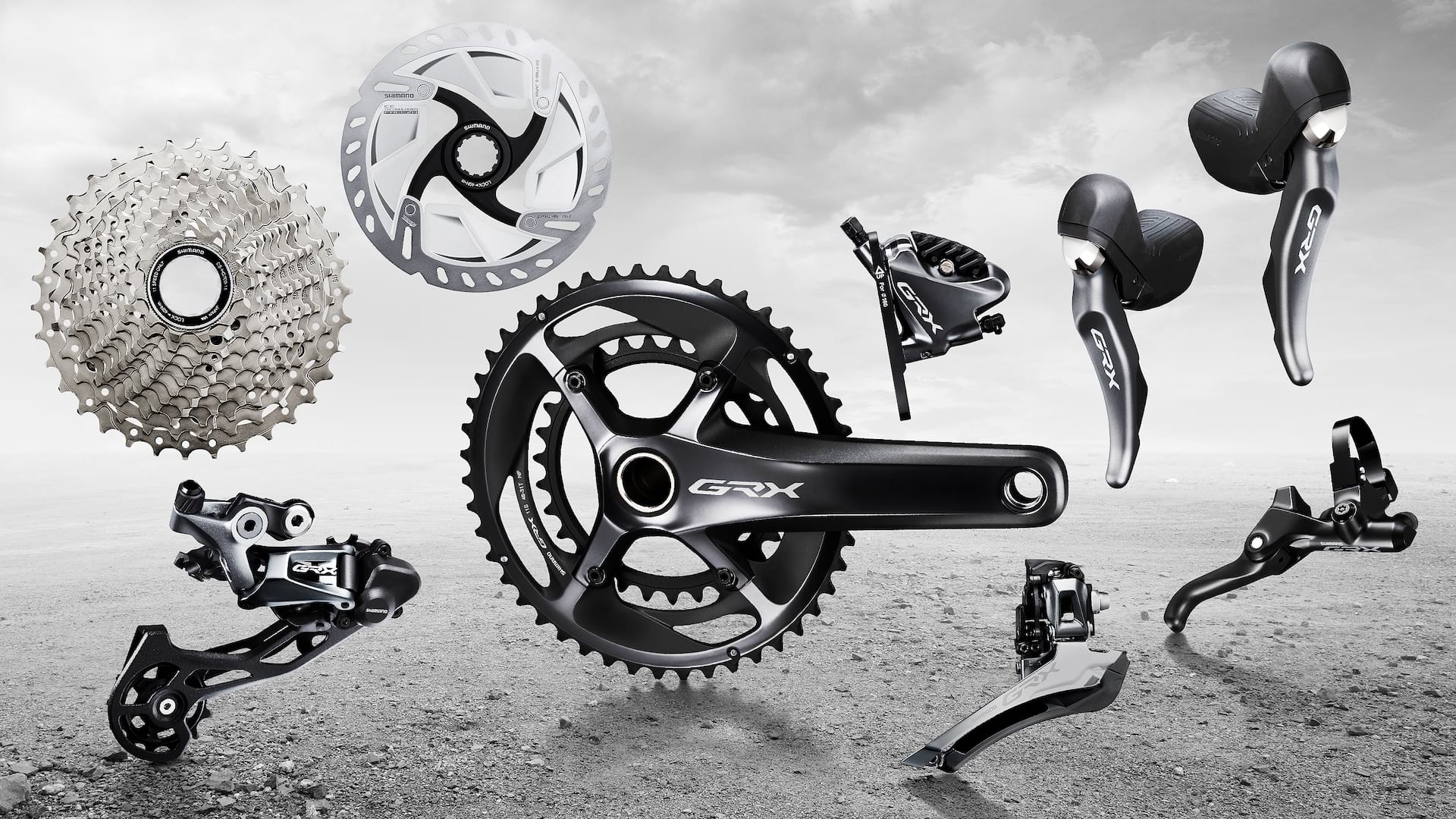
We were in for a surprise.
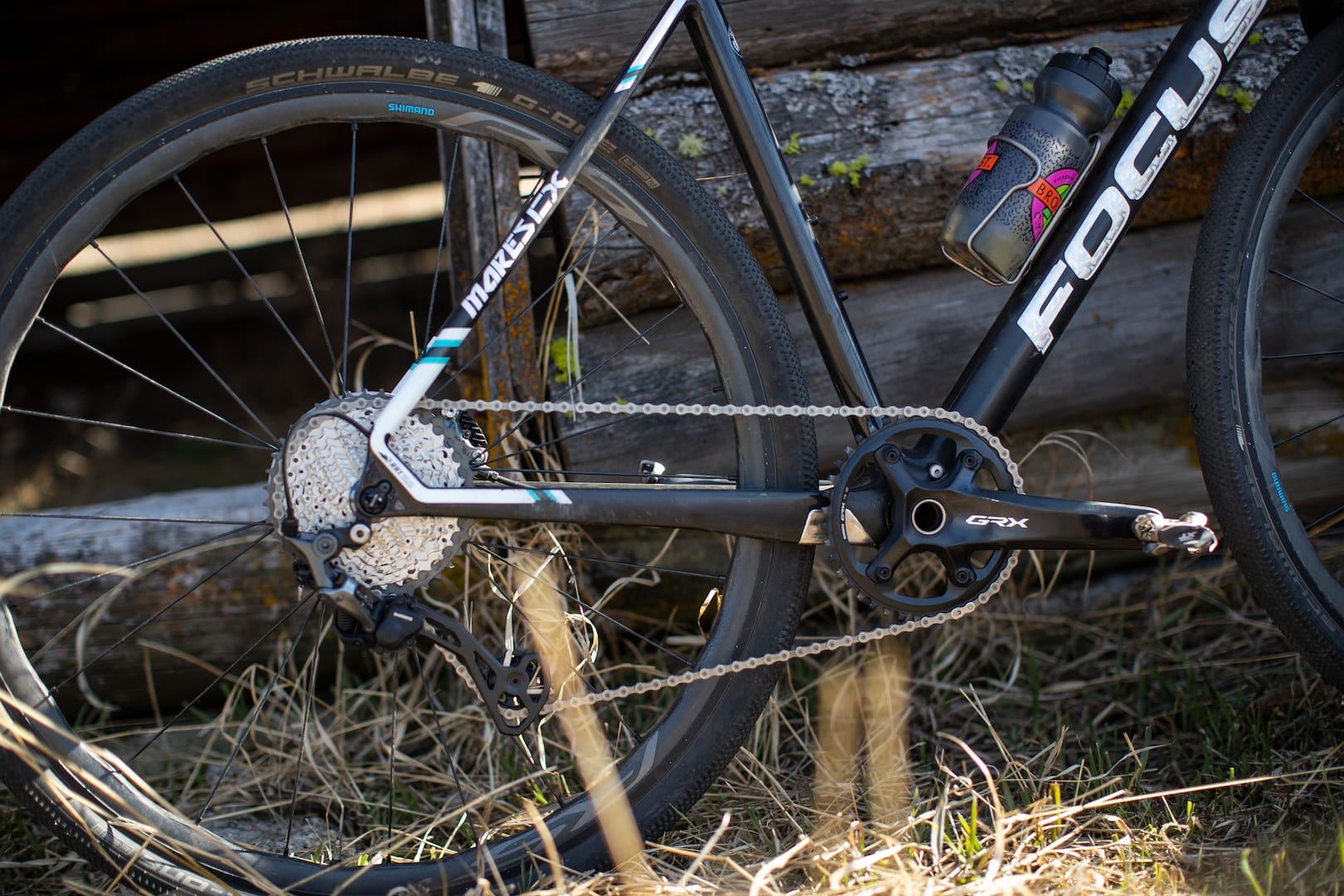
Innovation
Well, it might have taken a while – nobody rushes Shimano – but it looks like it was worth the wait. Not only has the original “Big S” got a gravel groupset, it has put some serious thought into what gravel and adventure riding means.
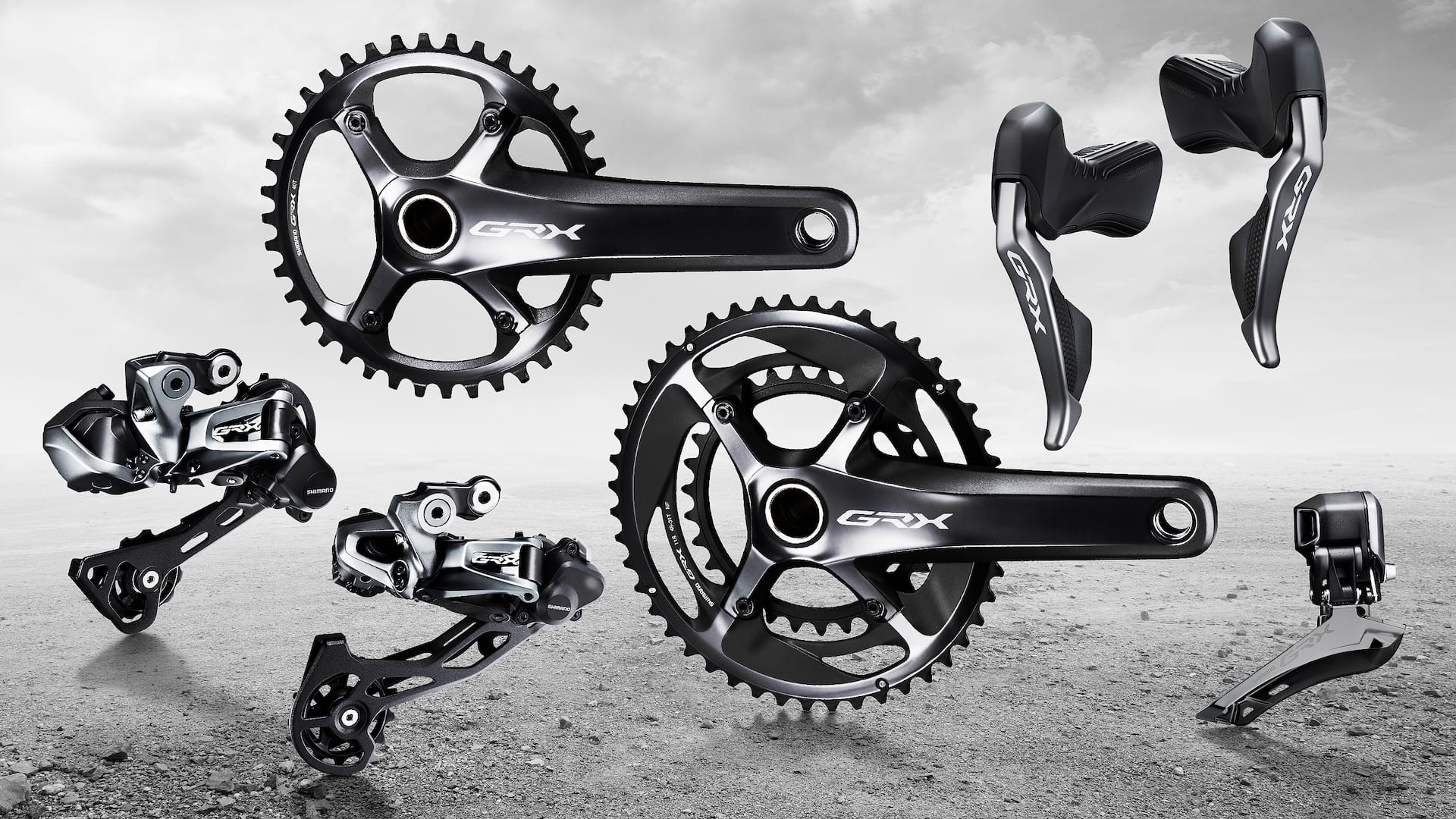
As a result, it’s the first of the mainstream brands to release true dropper post integration (using the left STI shifter as an actuator on 1x options). There’s more though – previously the preserve of a few ‘cross racers and a firm favourite of 3 Peaks racers, the company has released a pair of integrated ‘cross top levers for braking on the tops.
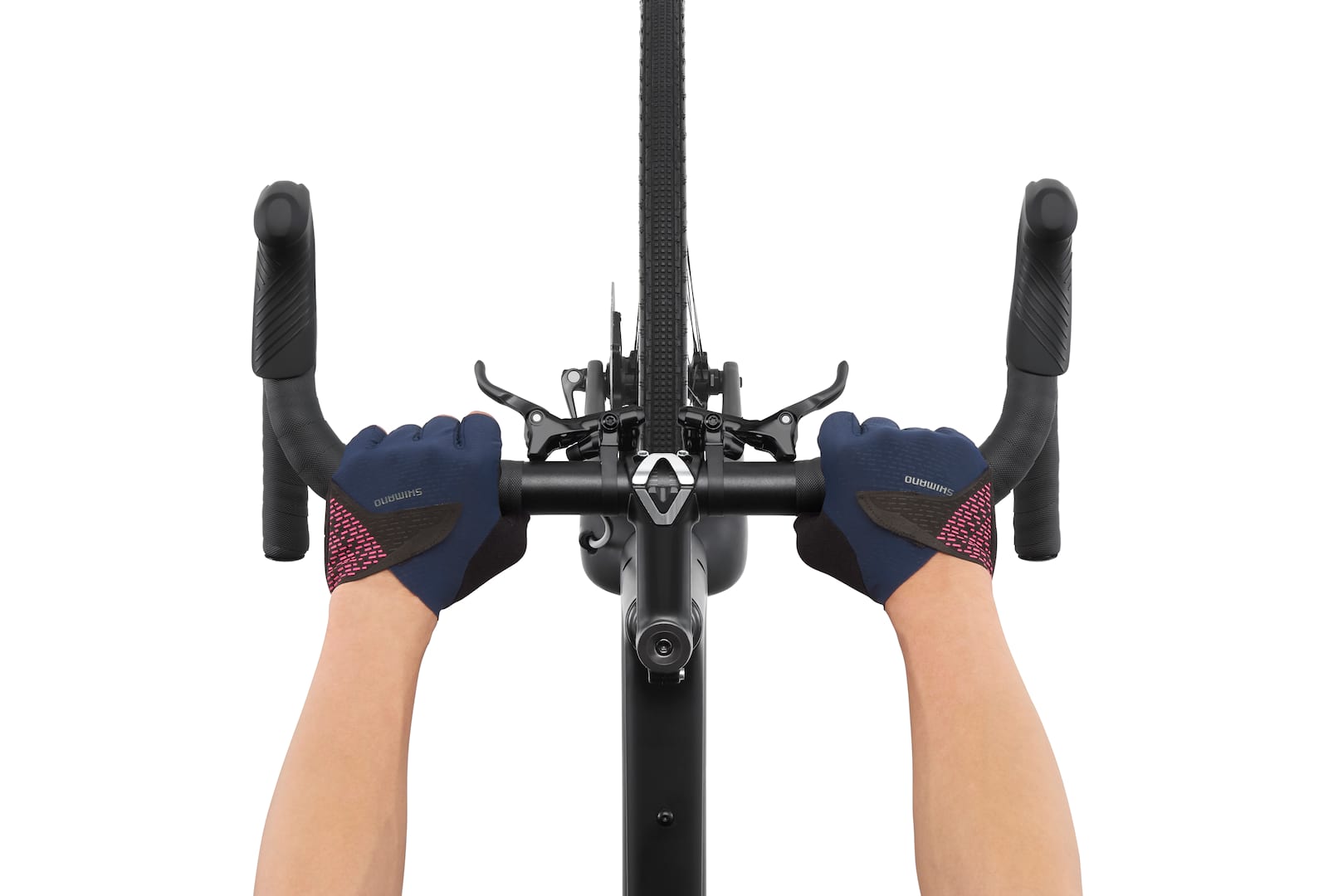
We are getting ahead of our selves a little though. Let’s have a look through the range bit by bit.
What Shimano has to say
You’ve had our initial take, but what does Shimano say about its new range?
“Featuring multiple options including double and single drivetrains, mechanical or electronic shifting, 11 and 10-speed drivetrains, dropper post integration and wide or close-range gear ratios dedicated to every style of gravel and adventure riding.

“Following a comprehensive research, testing and development process, bringing together global feedback from riders on trails, bridleways, pavement and paths at all levels of competitiveness, Shimano introduces a new component series known as GRX; the world’s first dedicated family of gravel/adventure components built for both fast riding and assured capability on loose surfaces.”
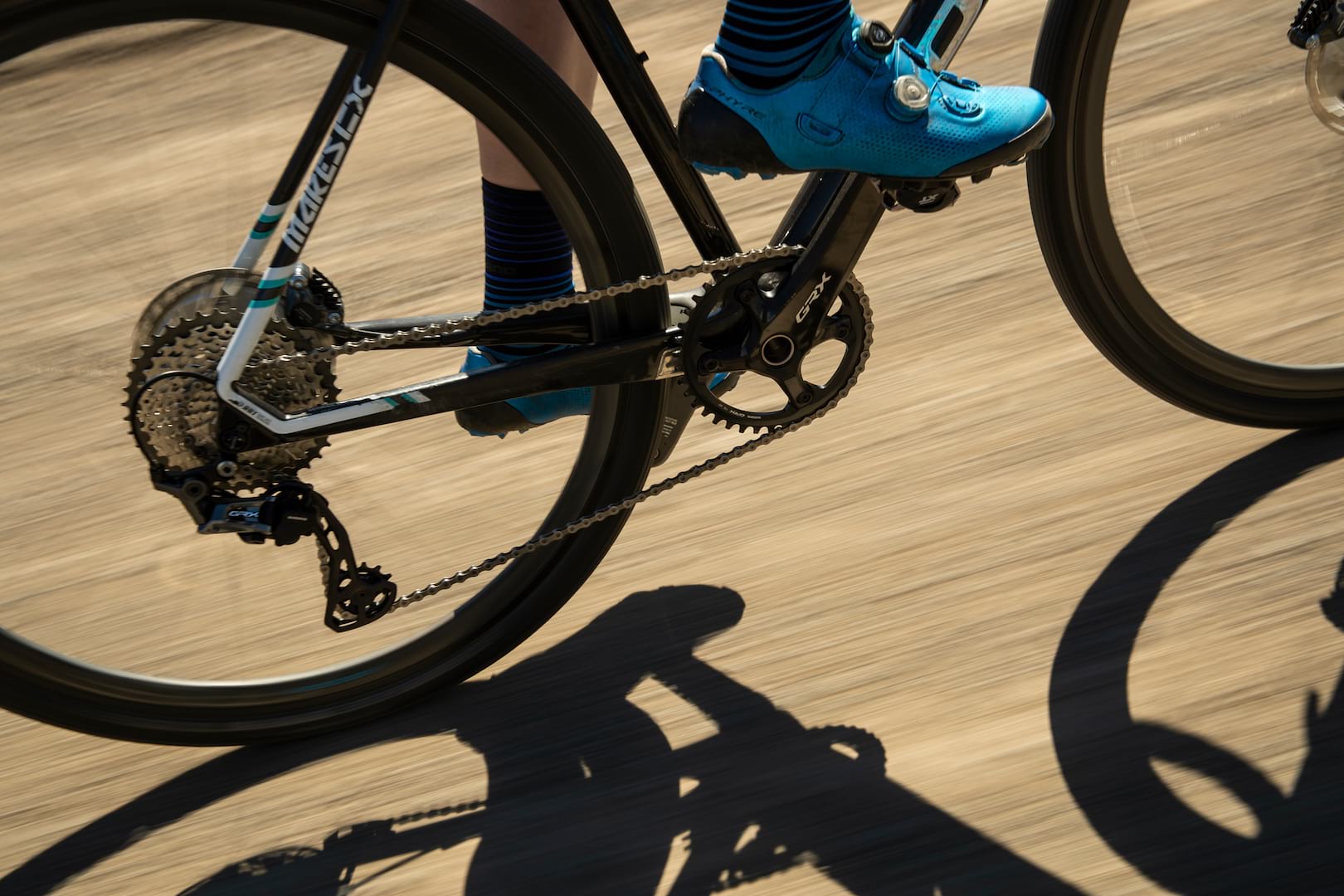
“Developing the series took Shimano’s development team well outside traditional confines to create a platform that addresses riders’ needs now and into the future. Be it gravel riding, modern adventure road riding, bikepacking, or fulfilling the needs of discerning cyclocross racers, SHIMANO GRX provides options ranging from gravel-tuned gearing ratios to custom ergonomics, from dropper post integration to gravel-specific GRX wheels with wider rim profiles.”
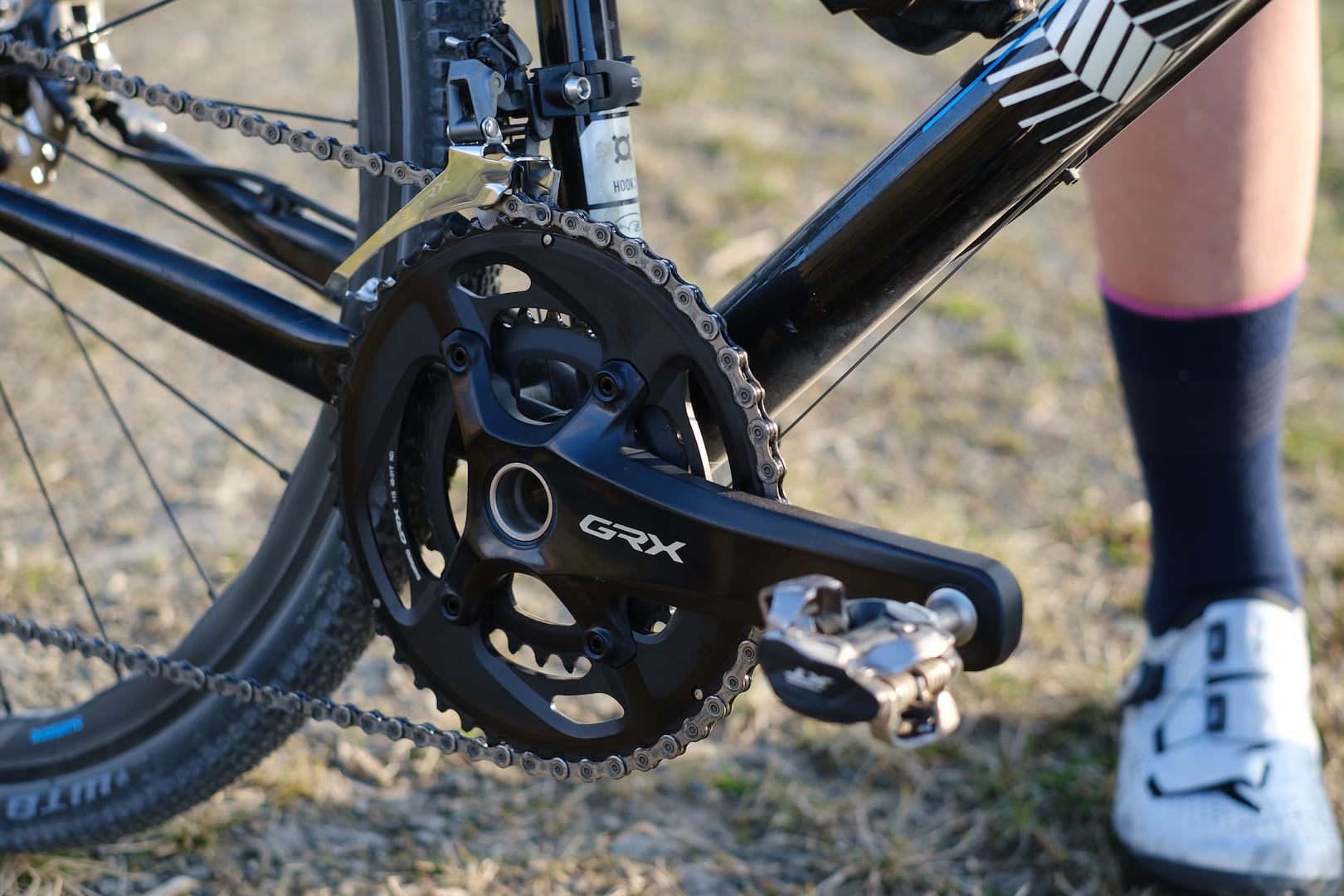
There’s obviously a bit of “of course they’d say that, wouldn’t they”, but looking at the range, we are inclined to agree with Shimano’s conclusions; on paper at least.
The components
Diving into the detail, GRX includes three crankset options – 1×11, 2×11 or 2×10-speed – plus front and rear derailleurs, disc brake calipers with an in-line brake lever option, and left and right STI hydraulic levers, coming in either Di2 shifting or mechanical shifting options. For simplicity, Shimano GRX recommends using Shimano MTB (Deore XT, SLX or Deore) or Road (Ultegra, 105, Tiagra) cassettes and chains that already exist in the Shimano lineup. There is also a couple of “gravel specific” 1×11 GRX cassettes.
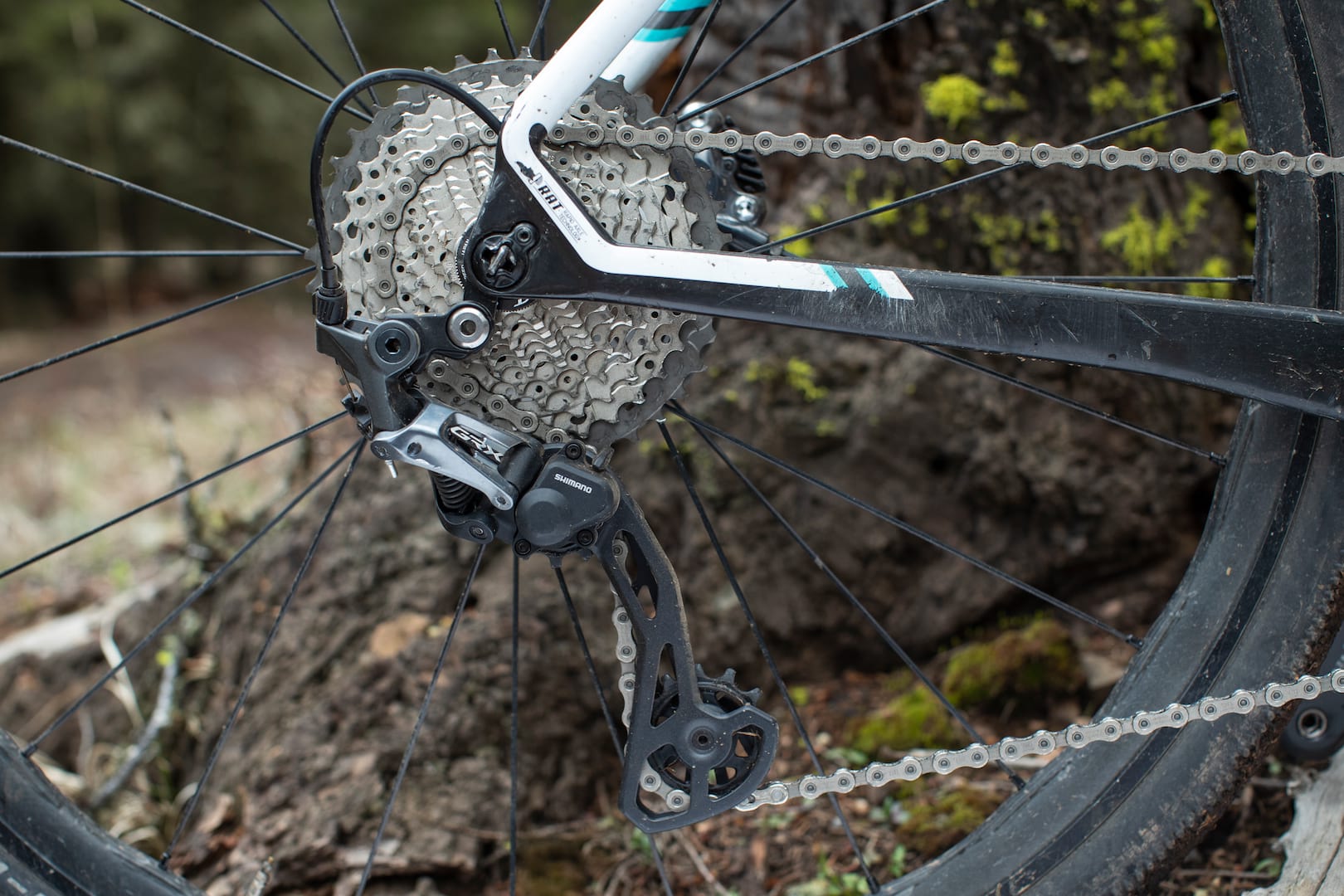
RX800 is the Ultegra-equivalent 11-speed series and comes in both Di2 and mechanical options. RX600 is 105-equivalent and 11-speed and can be mixed and matched with RX800. Finally RX400 is the 10-speed option.
GRX Cranksets
The GRX cranksets are built for tackling different riding terrains and riding styles, all coming with a +2.5mm chainline for increased tire and frame clearance. Perhaps the biggest news here is that Shimano finally has a single ring option for drop-bar riding.
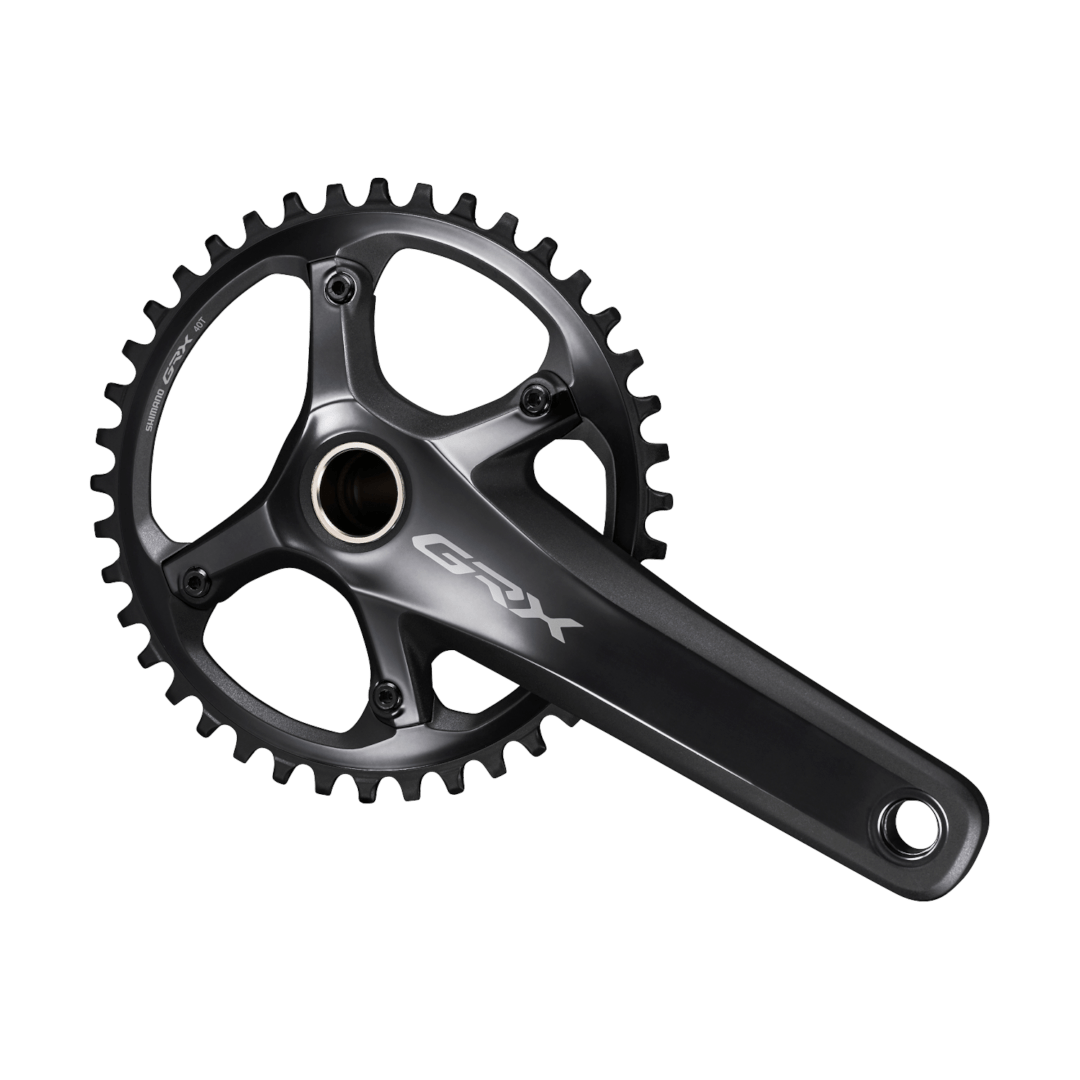
GRX single ring cranksets offer the simplicity of shifting only on the rear cassette (options include RX800/600 40T cassettes or the RX800 42T cassette as well as existing MTB cassettes) and are delivered with Shimano’s Dynamic Chain Engagement tooth profile on the front chainring to offer increased chain retention over bumpy ground.
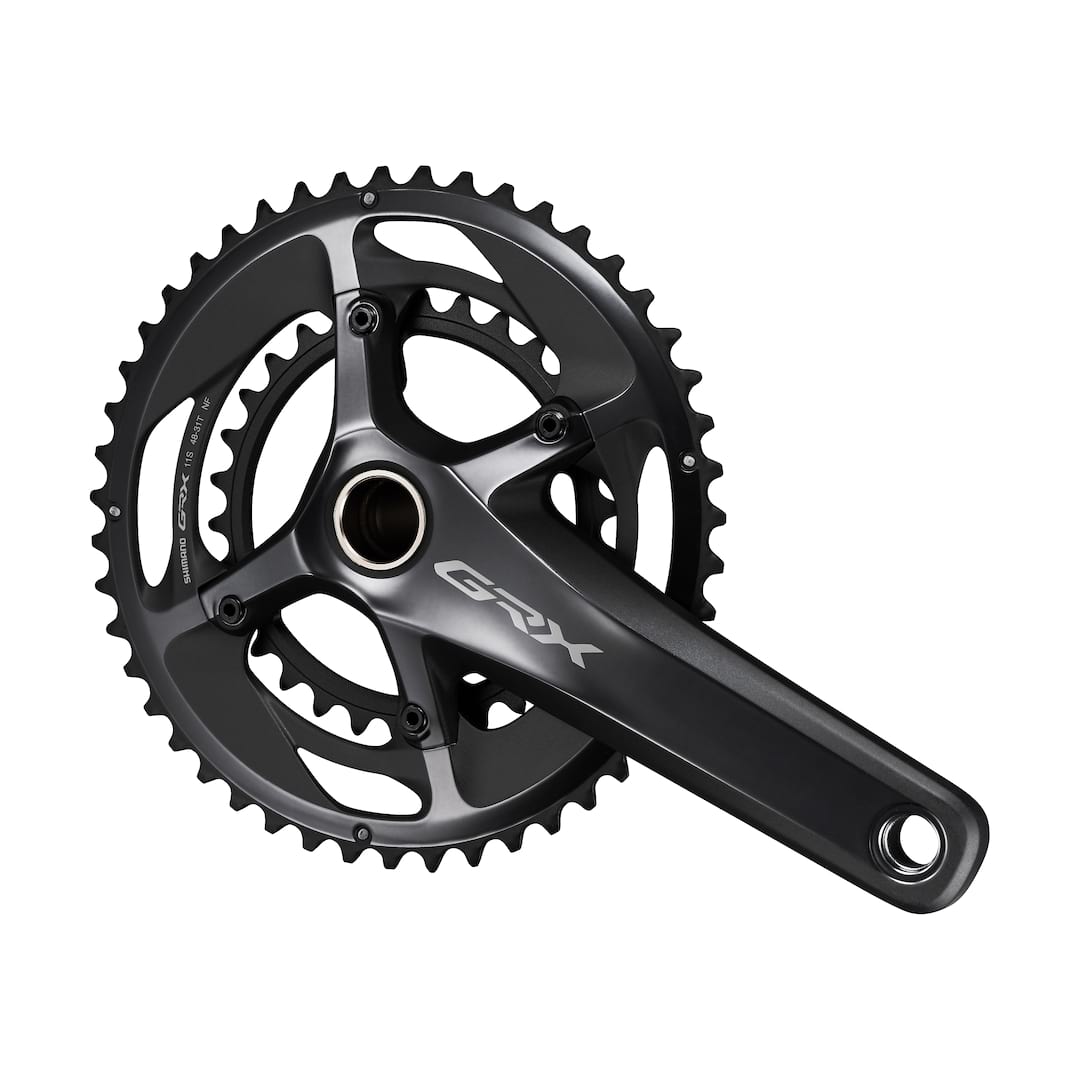
Meanwhile the GRX double chainring RX810 crankset uses a whopping 17-tooth gap which, at 48-31T, is the company’s widest-ever gear ratio. There’s also a closer, but still quite wide really ratio RX600-11/10 46-30T option. We can see the double being popular for off-road bikepacking, allowing some serious winching on the steepest of gravel climbs, but also tapping out high-speed miles on smooth surfaces.
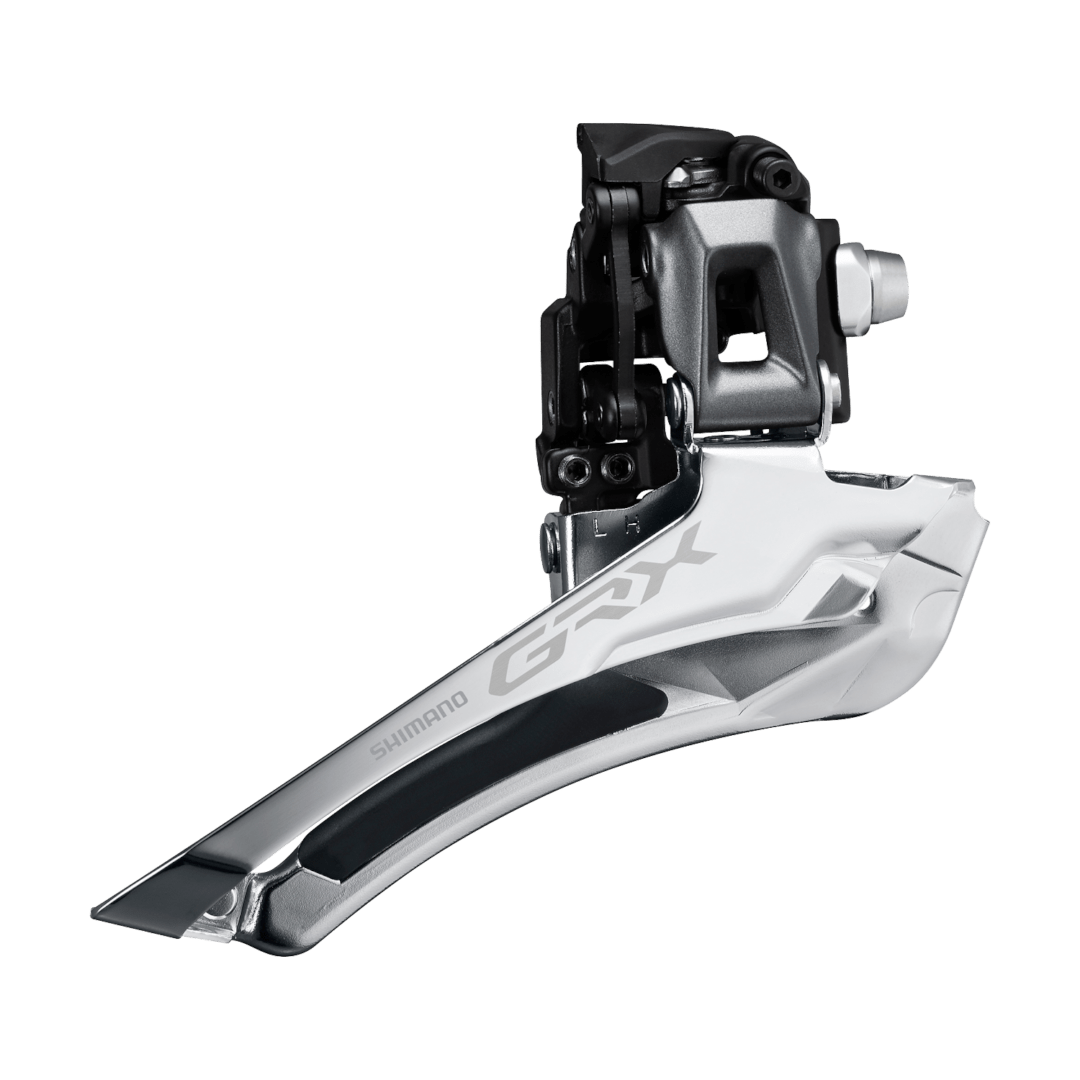
In combination with double chainring, there are a few front derailleur options. All are designed with good clearance for wider tyres and to be able to cope with large ratio changes of the cranksets. As you’d expect there are both Di2 and mechanical options. The mechanical versions have been designed with an “ergonomic power curve” to keep the shifting light, despite that big gap.
GRX rear derailleurs
All the rear mechs have adopted the technology introduced in 2018’s RX rear derailleur. They use a clutch style mechanism which Shimano calls SHADOW RD+. The intention is to reduce chain noise and chatter. As well as keeping things quiet, it means that shifting should be smooth over rough ground and minimises the chances of a dropped chain.
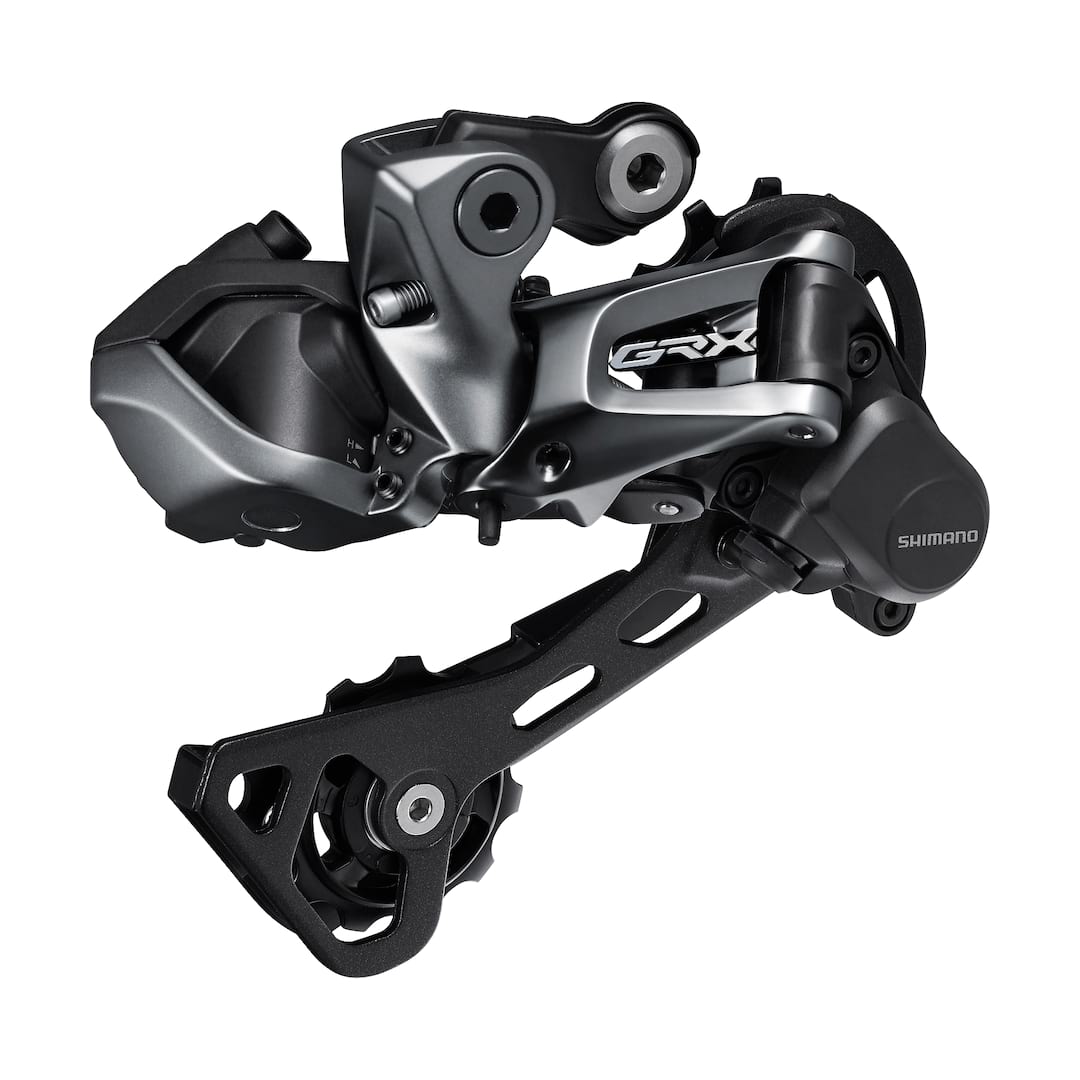
The rear derailleurs are available in short cage, designed to work with cassettes up to a 34t; or longer cage, designed to work with wide range 42t cassettes.
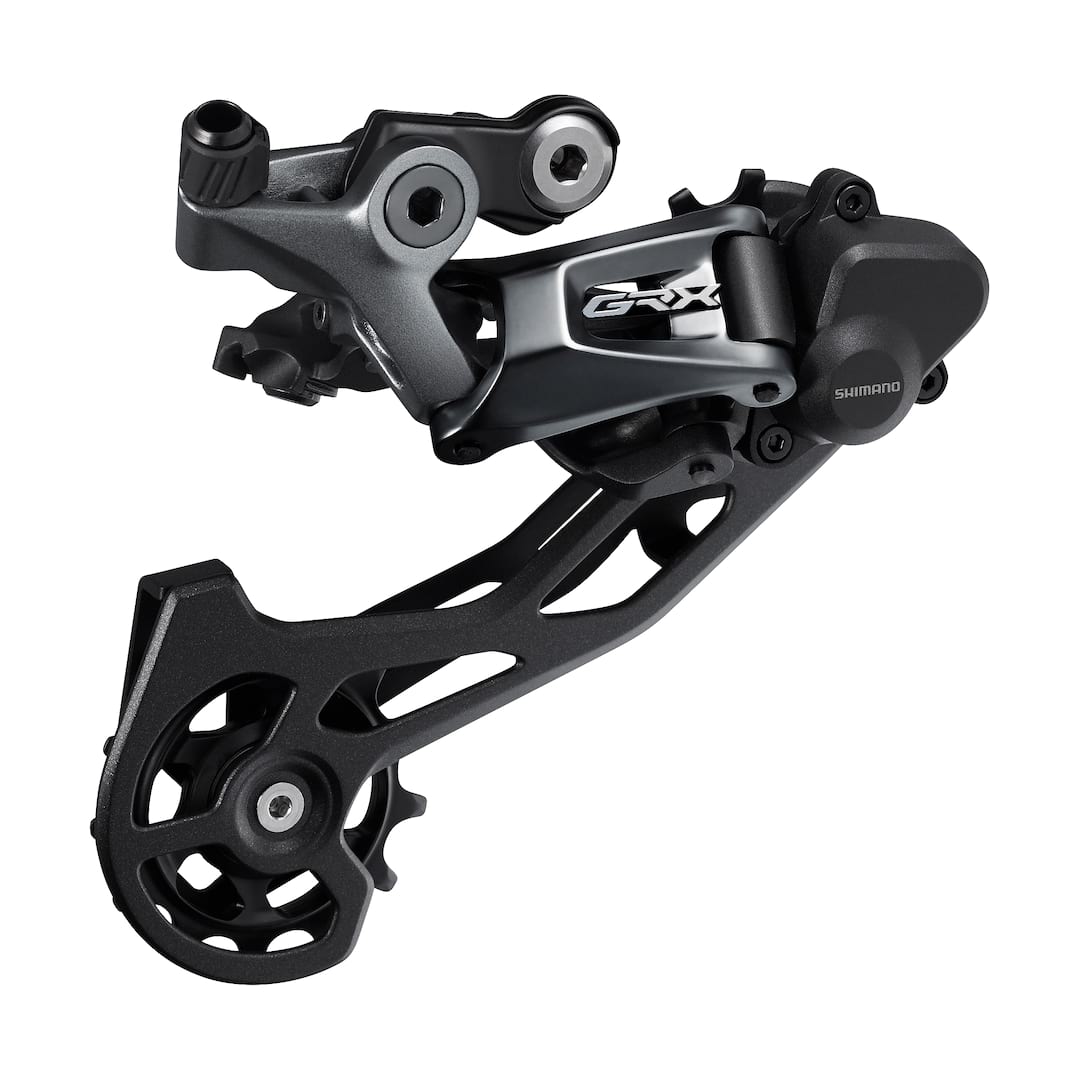
GRX STI levers
GRX shifting comes courtesy of dedicated “gravel-specific: ergonomic levers. What does that mean? Well, they feature an 18mm higher axis point than Shimano’s road STIs, curved brake lever profile and anti-slip textured finish.
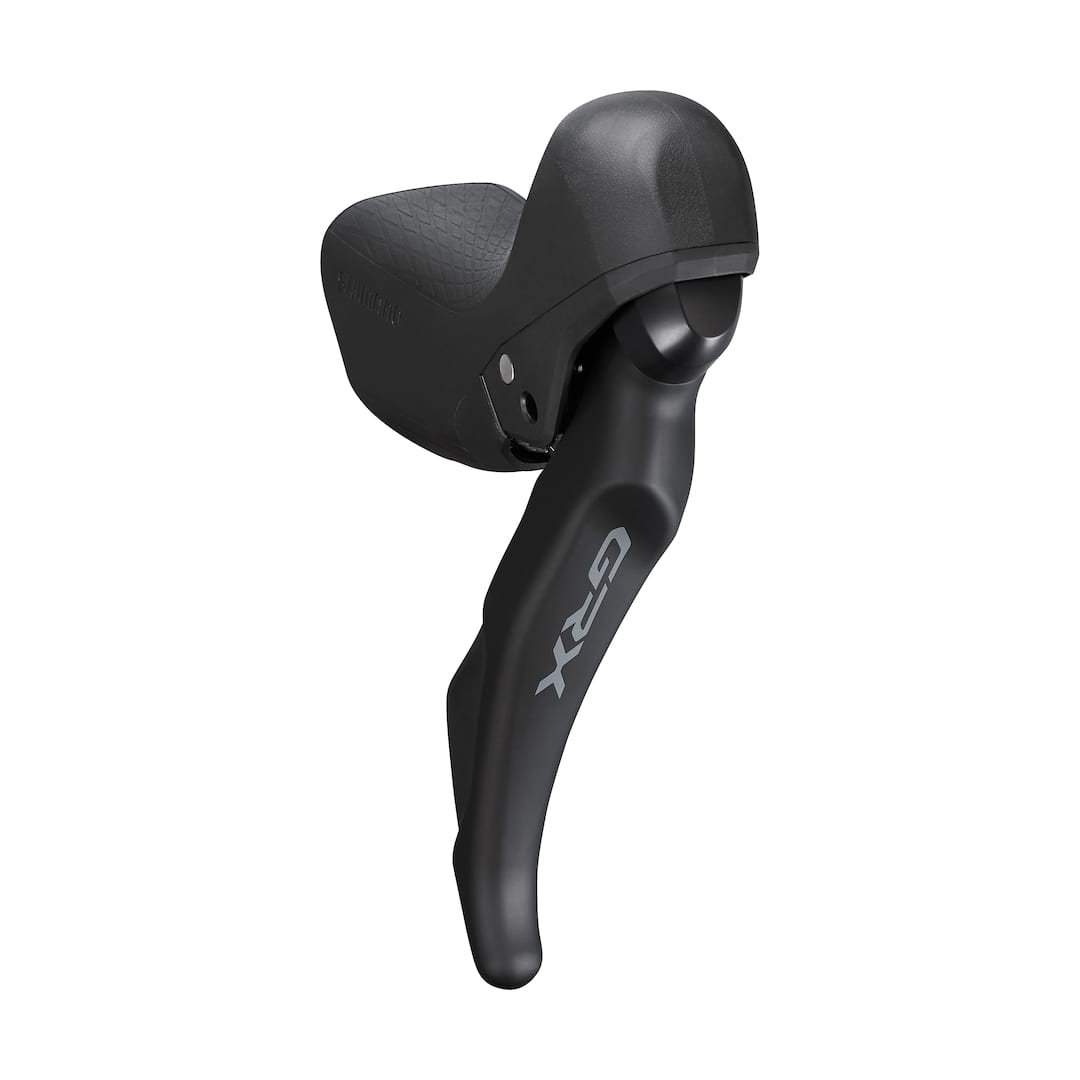
We’ve started to see more and more gravel bikes coming with dropper posts. We aren’t entirely convinced about the benefits yet; partly because most actuation levers have been positioned on the tops. At the very time you want handling control for a technical section, you need to take your hand away from the bars and brakes to lower the saddle. We’ve seen some clever bodges utilising the unused shift mechanism of a left lever on 1x set ups, but Shimano has finally brought out an “official” version.

To integrate the use of dropper posts in gravel riding, Shimano created the GRX mechanical ST-RX810-LA left hydraulic disc brake lever that, when used with a 1×11 drivetrain, can control a dropper post whilst also keeping the cockpit tidy. The integrated cable pulling system has a 9mm lever throw to operate dropper posts with cable heads at the shift lever. You can also get a 1x left side lever without the dropper internals should you be happy with your saddle where it is thank you very much.
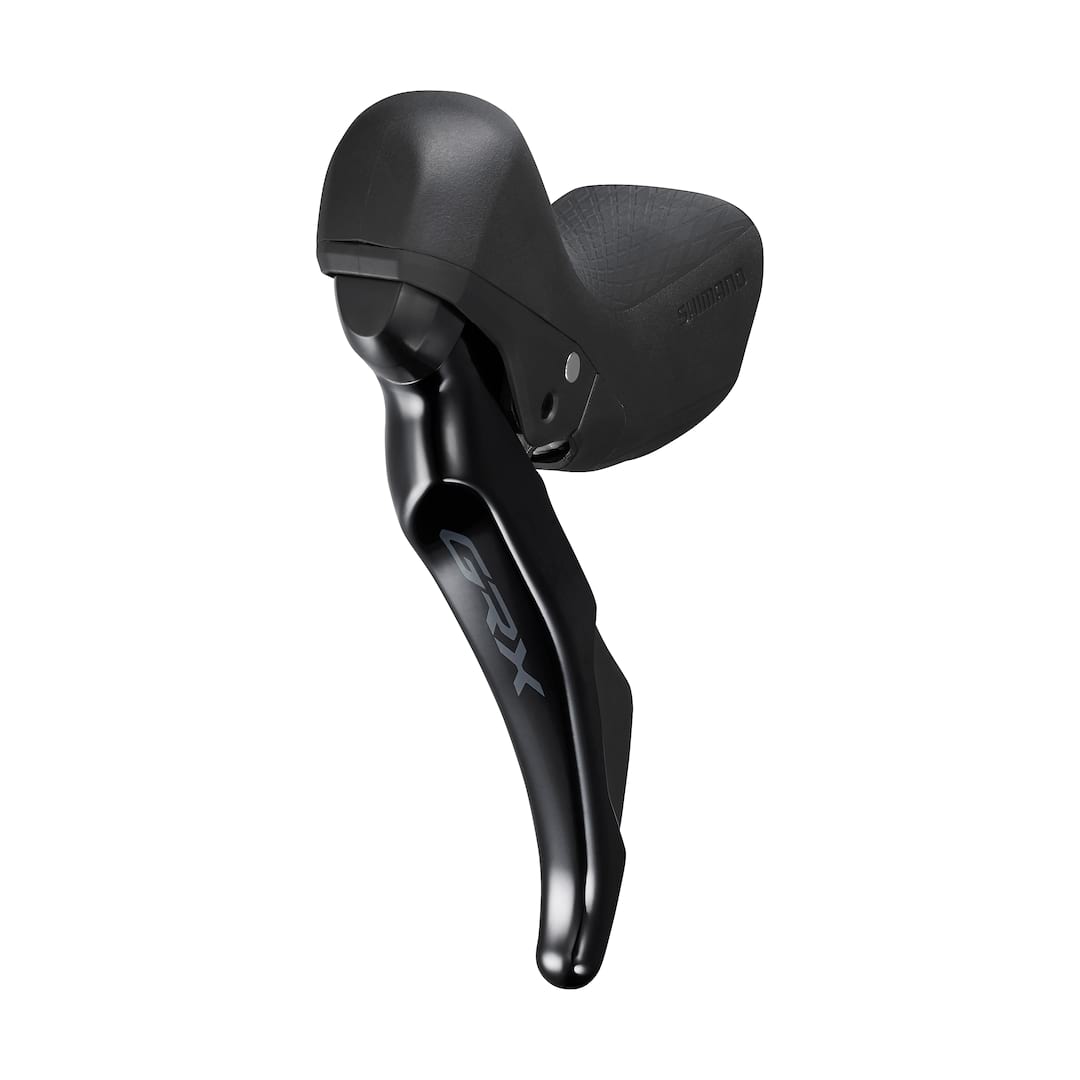
Finally there’s a Di2 version of the left-hand lever which comes with three buttons for operating ancillary functions like lights or 3rd party computers. Fancy pants.
GRX braking
Shimano has decided to transfer a bit of its learning from the mountain bike side and offer a more powerful version of its drop bar braking. The top tier ST-RX815 brake uses Servo Wave technology to give stronger braking and better modulation.

If you are happy with the level of power currently offered by Shimano’s road disc brakes (we’ll be honest, we’ve never really felt that they weren’t powerful enough), then there is a RX800 series brake without Servo Wave. The RX600 and 400 options also non-Servo Wave.
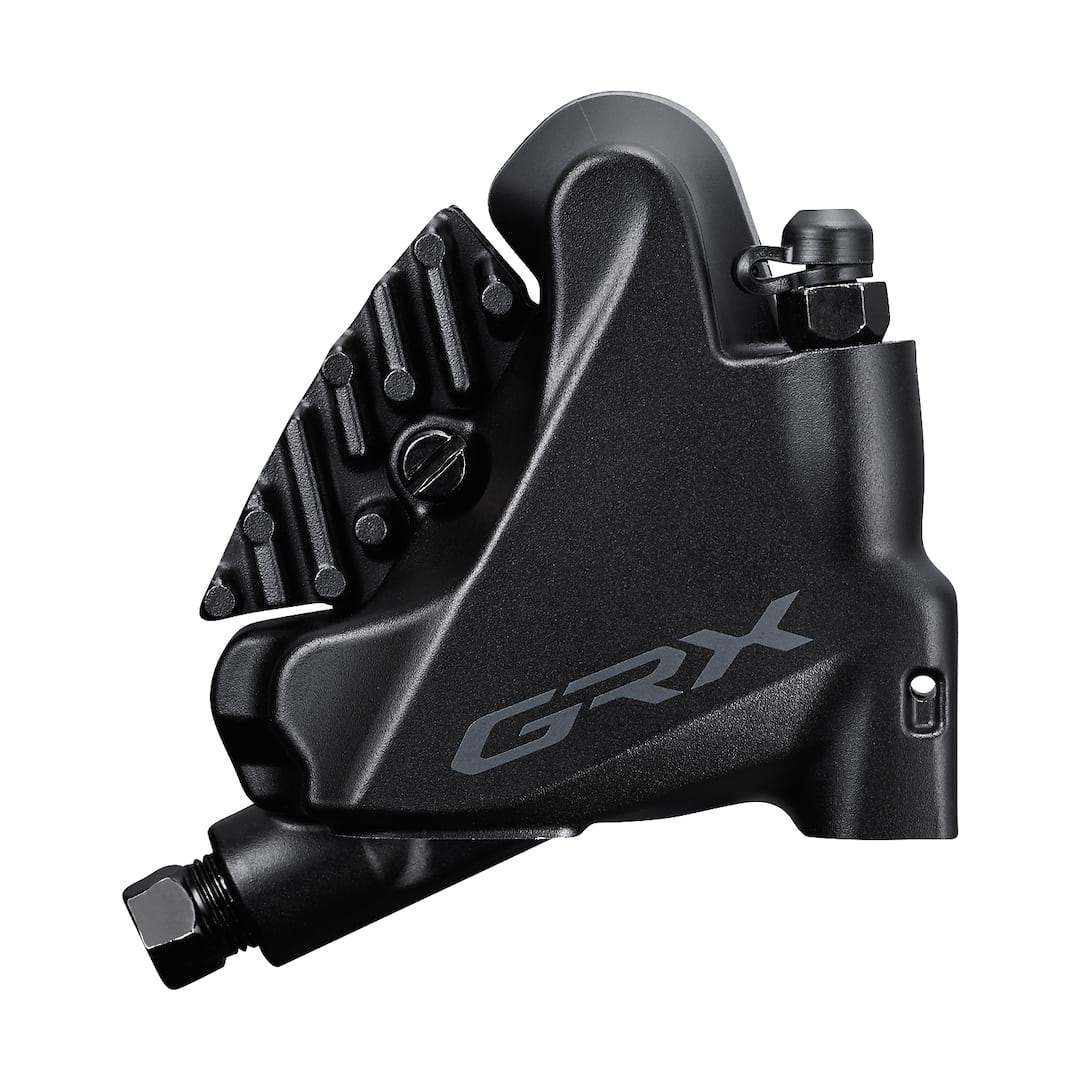
Shimano hasn’t stopped there though. An additional braking option comes with an inline hydraulic sub-brake lever which connects to the main hydraulic line running to the front and/or the rear caliper.
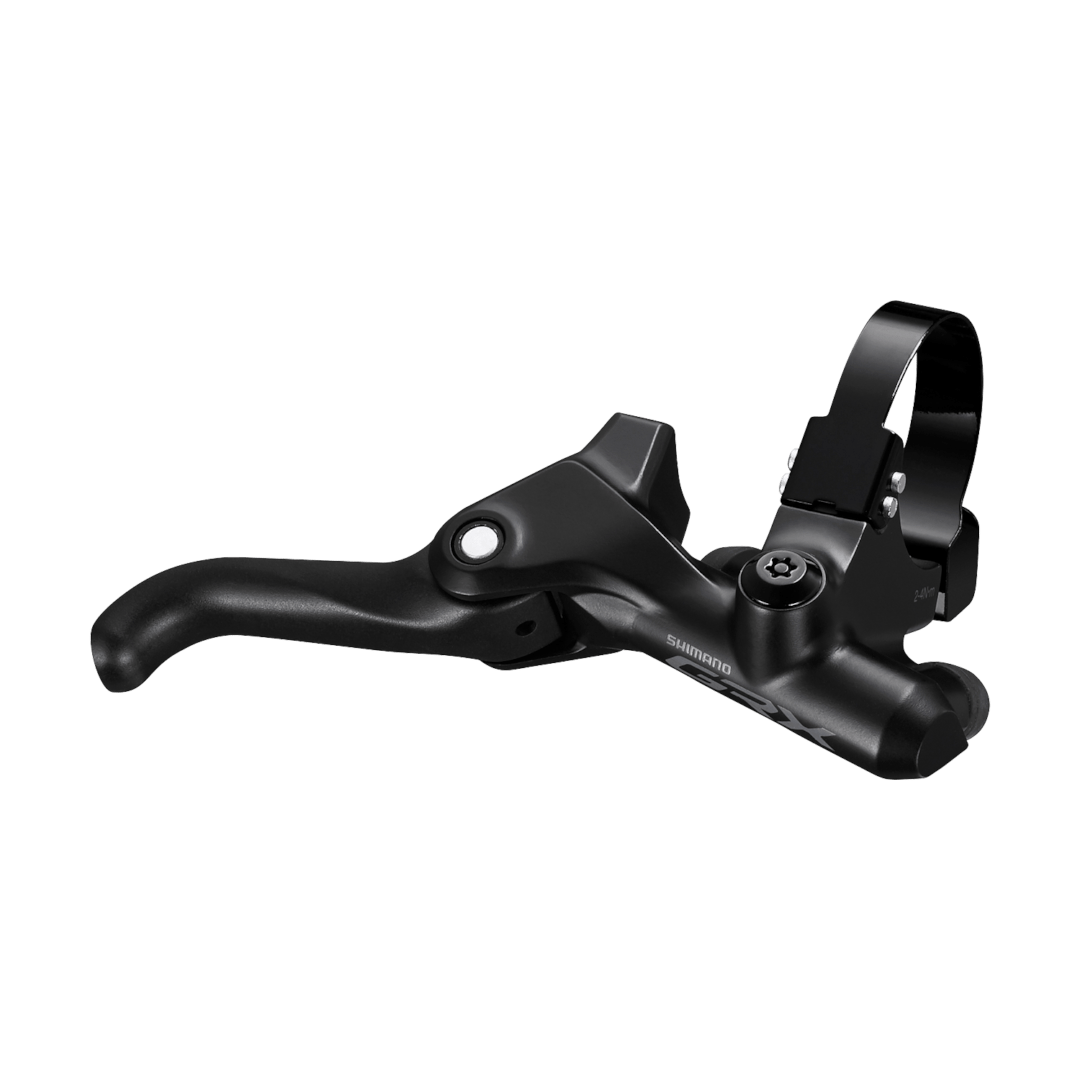
The sub-brake lever is designed to be mounted on the handlebar next to the stem offering options for braking when riding with hands on the tops. “Cross tops” were more popular when brakes were less powerful (and cable operated – and therefore easier to create dual pull). Again, it’s not something that most of us have missed, but there are times that they come in handy, and we think they might be due a return for three reasons:
- As some gravel riding gets more technical, the ability to move a rider’s body weight slightly further back by using the bar flats is beneficial
- In the “good old days” drop bars were narrow. We often felt the benefits of moving weight back were countered by the twitchiness of having your hands so close to the stem. It’s now possible to get much wider gravel bars, so this could be less of an issue.
- Gravel bikes are many people’s preferred bikepacking option. Alternative hand positions that still allow full control of the bike might prove popular.
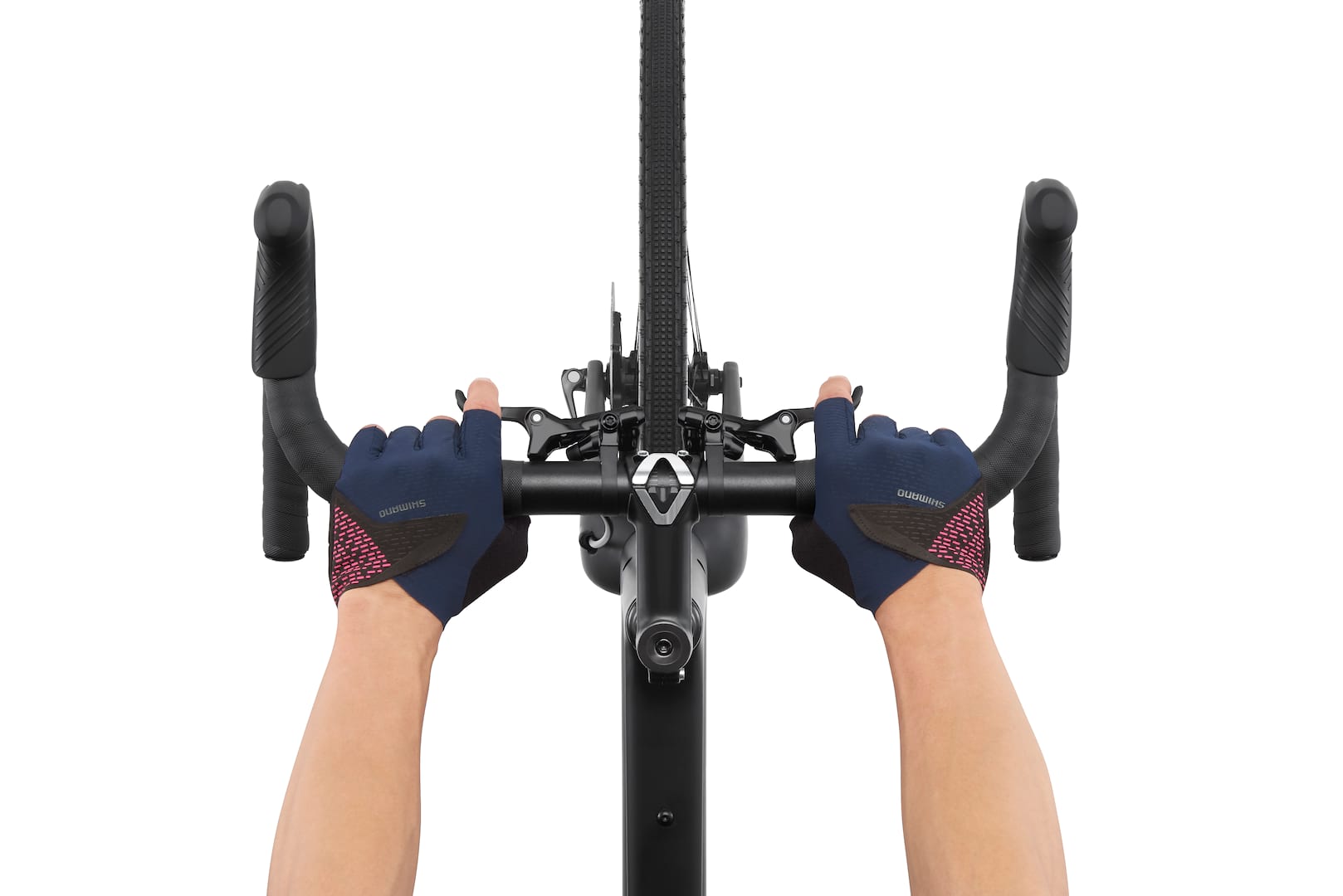
We are intrigued to try the inline brakes and see how often we end up using them.
Finishing the braking department off, the GRX calipers echo the design of Shimano’s flatmount road calipers, using features like one-way bleeding and “Ice Tech” heat-dissipating finned brake pads. This is the same on the rotor-front, which once again uses Ice Tech to keep things cool for long-lasting brake performance.
Wheelsets
To complete the range, Shimano has two gravel/adventure-inspired wheel sets. The 700c or 650b thru-axle wheelsets are tubeless ready (natch) and “offer an optimal balance between weight, stiffness and gravel durability”. They use a (relatively wide, but fast becoming the norm) 21.6mm inner rim width. The 700c version weighs 1600g for the pair, the 650b set comes in a little lighter at 1540g.
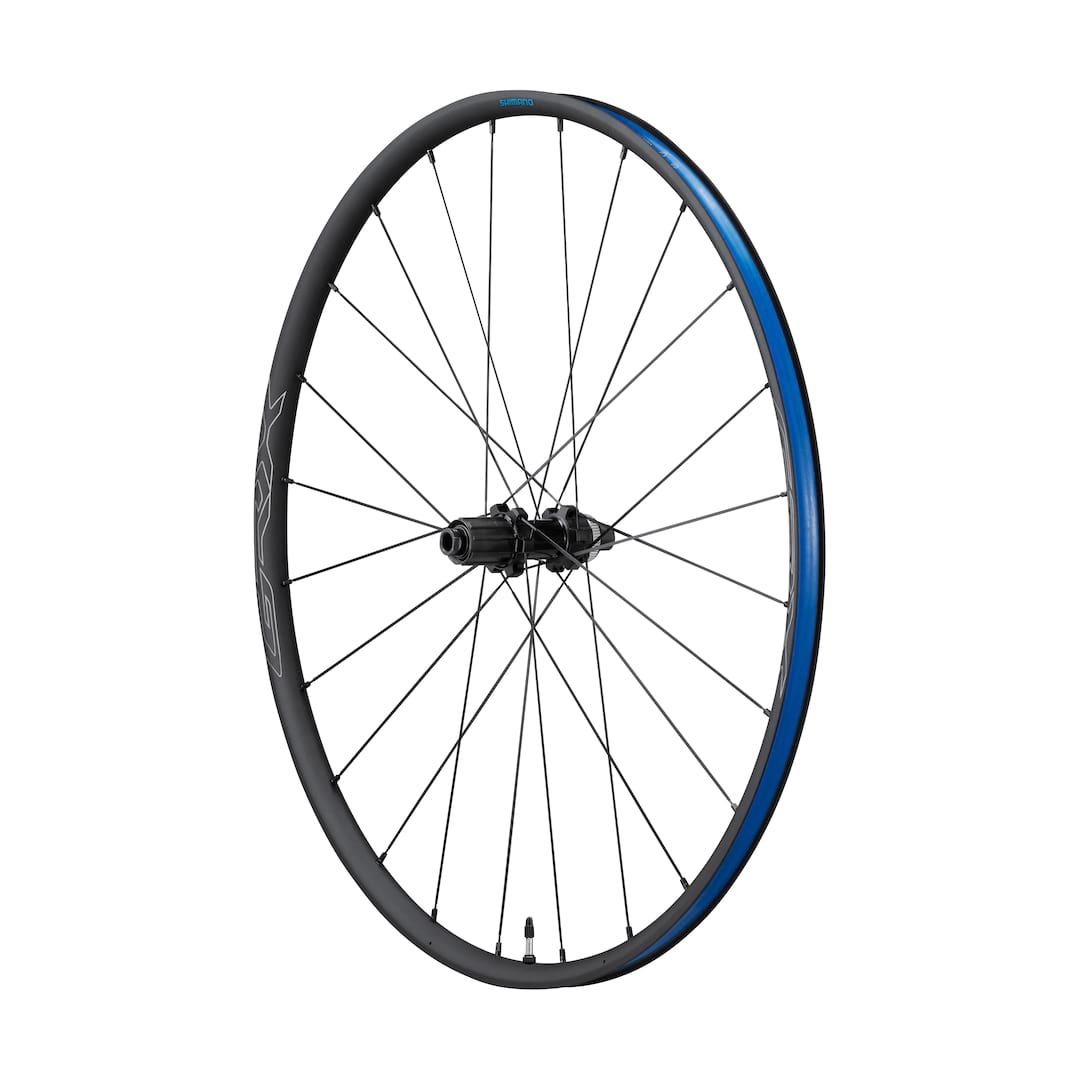
Summary
Gravel seems to mean so many different things to different people, but take a look at any company’s current gravel bike range. You’ll generally see multiple SRAM-specified 1x models and maybe a token 2x Shimano-specced bike. Riders, in general, have asked for 1x for gravel and Shimano has been edged out of the market.
It is therefore great to see them respond, and not only respond, but do it with a fully thought out and innovative range that covers multiple budgets. Dropper compatibility and those inline levers might grab some headlines, but it’s the basics that will win riders over.
We are looking forward to taking both the 2x and 1x GRX option out on the trail and putting in the miles.
Pricing and availability
GRX mechanical options will be available in June. The Di2 options will follow in August. We’ll update with U.K. pricing as we get the details.
Comments (6)
Leave Reply
Post Comment

Lots to absorb there. Looks like they’ve done a proper job on it though. Cracking.
Curious that they’ve got multiple tiers of spec, all with the same ‘GRX’ badge. I guess that might refine in future.
Lots to absorb there. Looks like they’ve done a proper job on it though. Cracking.
Curious that they’ve got multiple tiers of spec, all with the same ‘GRX’ badge. I guess that might refine in future.
Well, that’s stopped me looking at a Hydraulic Tiagra setup. Time to get thinking and specing again….
Well, that’s stopped me looking at a Hydraulic Tiagra setup. Time to get thinking and specing again….
Hydo cross-tops are something I’ve been waiting for for ages – the Hope ones looked good but they don’t seem to be releasing them. This could get me to swap out the whole groupset – even the dropper lever is something I’ve considered hacking on my Sram Force setup.
Hydo cross-tops are something I’ve been waiting for for ages – the Hope ones looked good but they don’t seem to be releasing them. This could get me to swap out the whole groupset – even the dropper lever is something I’ve considered hacking on my Sram Force setup.